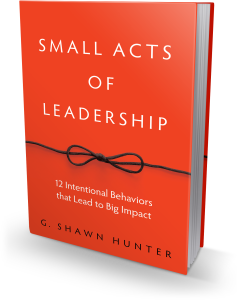It’s OK, You Should Ask. They Will Say Yes.
Welcome back! If you prefer, you can receive this newsletter when first published over here on LinkedIn. This week I show that you can – and should – ask for help, along with a few tips on how to ask from the research of Vanessa Bohns.
Recently my wife and I wanted to visit our son, a first year student at a university about a 7-hour drive away. He had only been there a few weeks, and we thought it would be nice to visit him at school for parent’s weekend, meet his new friends, and take in the fall college scene in New England.
In the end, we didn’t go. We have two dogs who would not have enjoyed 14 hours in a car, and a younger daughter who would need a place to stay for the weekend. She certainly wasn’t interested in a getaway with her parents on a long car ride, just to visit her brother. Yuck.
So what happened? We didn’t ask for help. It would have been easy. When I explained this to some friends, every single person said they would have taken our dogs for the weekend, including our old sweet yellow lab who we couldn’t bear to leave at a dog boarding kennel. Our daughter could have easily spent the night with friends. It would have taken two phone calls. We just didn’t ask.
In general, people hate to ask for help, or ask favors from other people. Our aversion to even interrupting someone else can be so strong, Vanessa Bohn has demonstrated in her research that we don’t like to approach strangers just to give them compliments (“Your sweater looks great on you!”), because we are concerned we might not express ourselves well to others. We believe we might appear awkward, strike the wrong tone, or be misinterpreted. So we say nothing. We ask for nothing.
But we shouldn’t be so worried. People will agree to requests more often than we think, particularly if the request is benign, or well-intentioned.
There’s a guy named Jia Jiang who tested this theory by spending 100 days asking random people for pretty benign, but often unusual requests. He called his experiment Rejection Therapy, and during the experiment, he made many requests of strangers. He went to a high school track and asked a random person to race him (yes), asked a police officer if he could sit in the squad car (yes), asked a Wal-Mart greeter if he could hug her (yes), asked a Subway sandwich maker if he could go behind the counter and make his own sandwich (no), asked a car salesperson if he could test drive an $80k BMW (yes), and even asked if he could give the flight safety announcement on a SouthWest flight (sort of).
The point is that people are more agreeable, and more willing to say Yes to our requests than we think they are. And because of this fact, we should be careful of the requests that we do make, and ensure they are well-intentioned, and designed for positive outcomes.
So, once you’ve figured out what you want to ask for, that comes from a place of good intent, here are a few tips from Vanessa Bohn’s research on how to make a successful ask.
Be direct: A mistake we often make is that we think it will be more polite to hint at the request, or drop clues that the other person is supposed to understand and interpret, to allow them to intuit our request, and volunteer to help. So instead of asking outright, we suggest or hint at it. People don’t always pick up on our hints. Be direct, and plain, in your requests instead.
Don’t overthink the ask: We often think we need to craft the perfect email, with compelling arguments, and carefully selected words, to gain their attention and get someone else to Yes. Actually, you don’t. The most compelling asks are direct, simple, and in-person.
Ask in-person, or at least by phone: It is very difficult for people to say No to someone else in person. Our default response is to agree, mostly because we don’t want to create conflict, adversity or disappoint someone else. And emails are easily ignored.
Don’t water down your request: In a series of studies at Columbia Business School, participants engaged in negotiations who thought they were being too assertive, or too pushy in their requests ( the “line-crossing illusion”), were more often viewed by the other person as being appropriate, and fair, in their ask. So don’t ask for half of what you actually want.
It’s OK. You can, and should, ask for help. Asking strengthens relationships, expands connections, and gives someone else a chance to give. Because giving someone an opportunity to give is a good thing.
________________________
Still trying to figure out what you want? We wrote a 5-minute microlearning course on that. Enjoy!
Our company Mindscaling, is busy building powerful online micro-learning experiences to drive the human change that propels your team. You can find our catalog of high-impact courses here. And if you want something more tailored, you can learn about our custom work here.
My book Small Acts of Leadership, is a Washington Post bestseller! You can grab a copy now.
And if you want to learn to apply some of these ideas and be an effective coach for your team, we wrote a course on that too. It’s called Coaching for Managers available over at UDEMY for Business.



